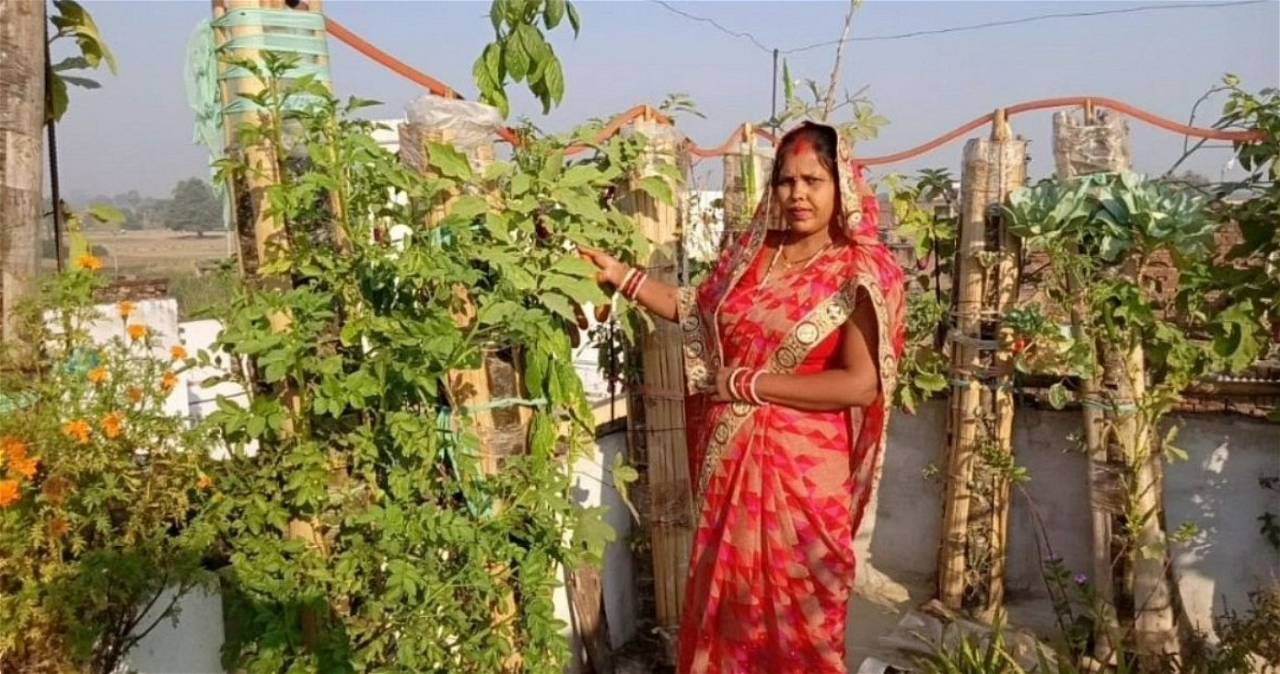
One of the reasons why individuals are hesitant to garden at home is a lack of space. Sunita Prasad, a dedicated gardener from Chhapra, Bihar, devised a solution using PVC pipes and bamboo to create a vertical garden. Every week, she plants about 5 kg of veggies here.
How Did Sunita Come Up With this Idea?
The notion of planting in pipes came to this creative person out of nowhere. One day, when selling products to a junk dealer, she noticed a pipe in his bicycle and bought it right away, hoping to make something new out of it. But it was eventually set on the roof with some dirt, and I noticed leaves sprouting from it after a few weeks.
This is how she came up with the idea of growing veggies in pipes. Today, she uses a vertical garden built out of PVC pipes and bamboo to cultivate practically every seasonal food.
She switched to bamboo after a successful initial phase of gardening in pipes. It had the same outcome. Gardening in two five-foot PVC pipes costs roughly Rs 1,000 on average. Vegetables of four to five varieties can be grown here. Bamboo, which costs Rs 50-60, can be used in the same way.
People can choose the pipe size based on the available space. This method can be used to plant any vegetable, from leaves to tubers. Sunita provides nutrients to her vegetables using vermicomposting.
How to Grow Vegetables Using PVC Pipes Method?
-
Cut as many sections out of a five-foot pipe as the amount of saplings/seeds you have.
-
Plant the seed/ seedling in the 3/4th segment of the pipe, which has been filled with dirt.
-
Fill the soil with vermicompost or other organic fertilizer mixture.
-
Make a hole in the earth and fill it with sand.
-
Water the sand to keep it moist and allow moisture to quickly reach the bottom.
-
For the next three years, there is no need to replace the soil.
-
Making a hole in the soil is all it takes to plant new saplings or seeds.
-
To keep pests away, use neem water.
Sunita now cultivates brinjals, okra, strawberries, and even cabbage in these pipes. An officer of the Kisan Vigyan Kendra was taken aback when he saw the successful crop. She applied for the Kisan Abhinav Samman on his recommendation and received it later."











